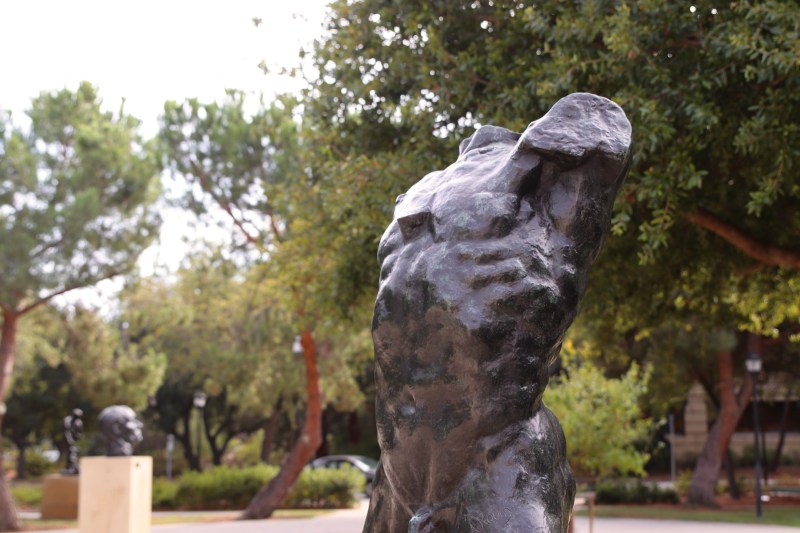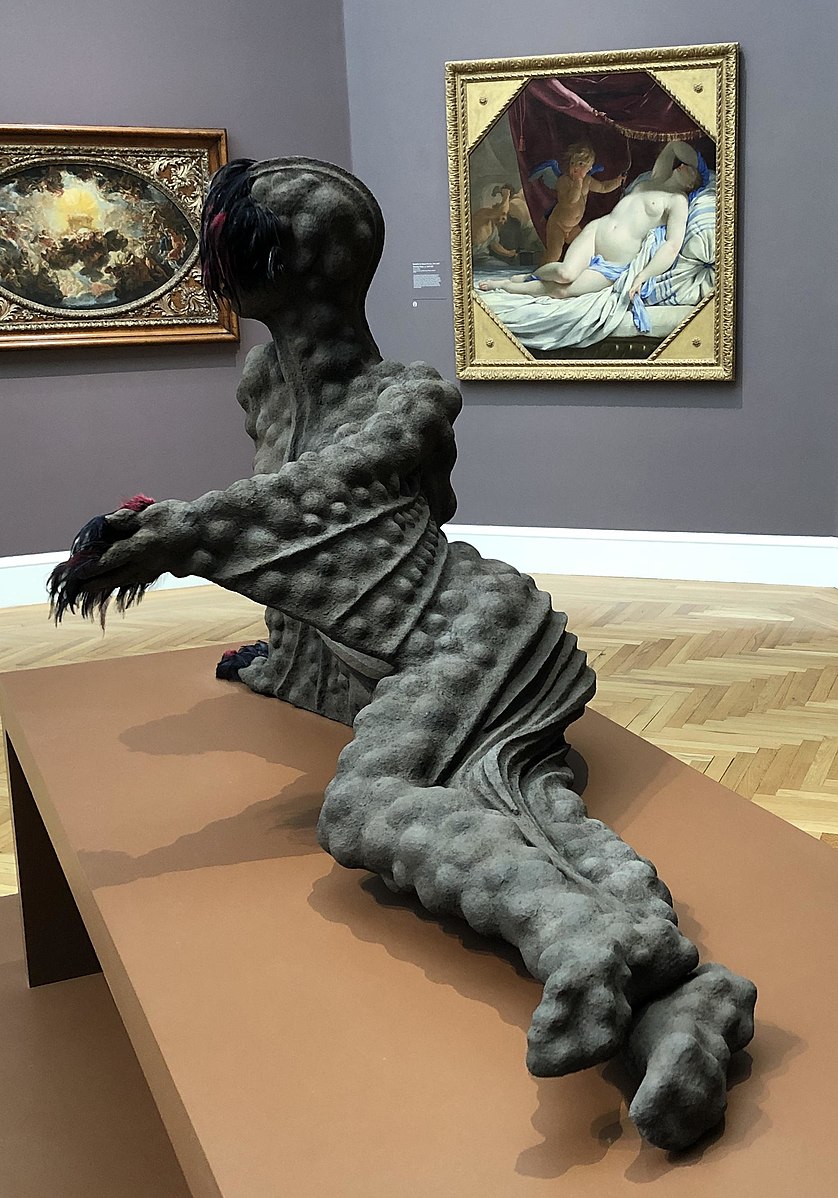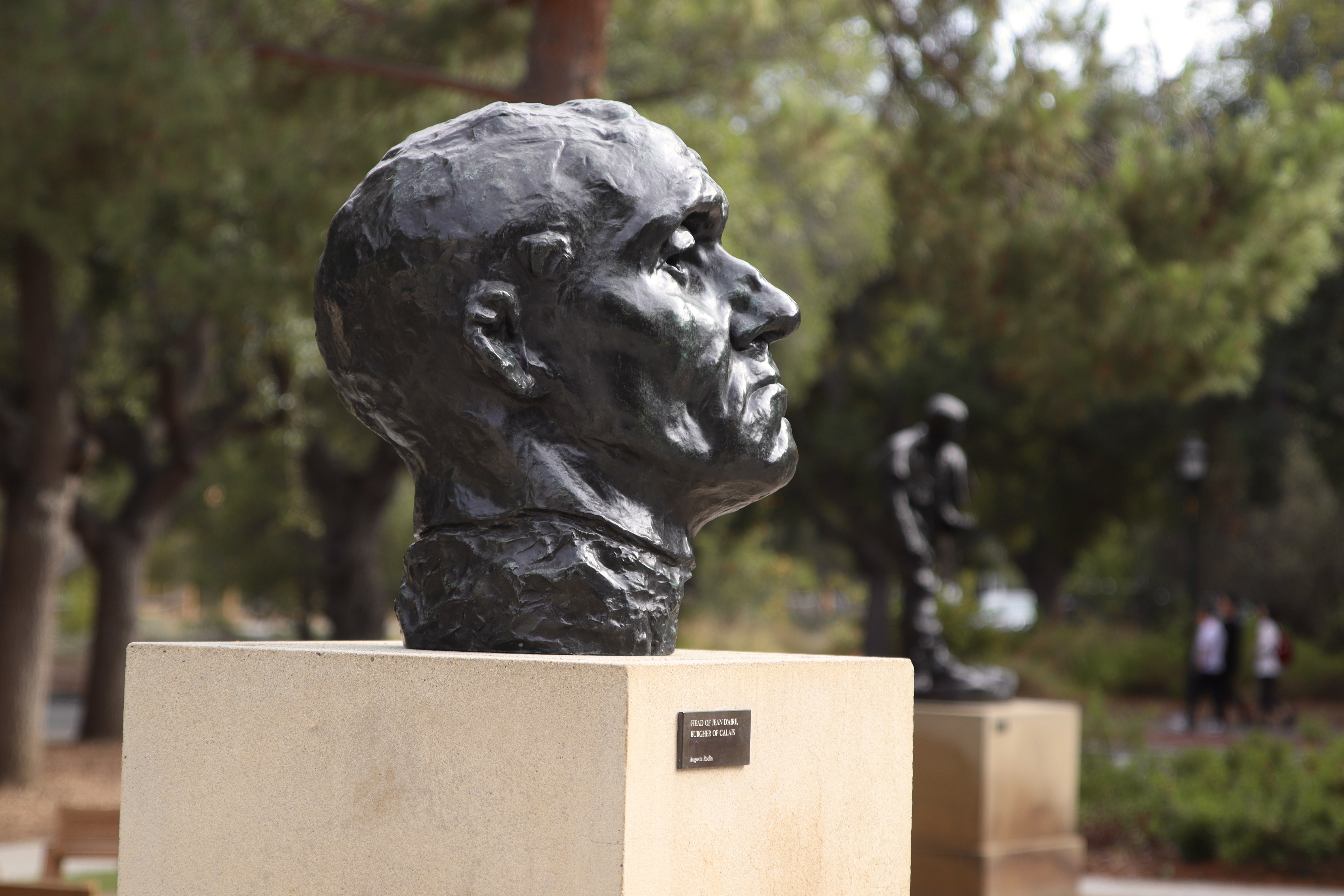When it comes to the art world, everything can (and should) be questioned, but not everything can be answered. That being said, Christina makes it her goal to undertake your visual art questions and give her take on the complexity, confusion and excitement of the art world. Please send your questions to arts ‘at’ stanforddaily.com — she’d love to seek answers with you!
If there is one visual artist that all Stanford students know of (if not by name, then by his works), it is Auguste Rodin. The French sculptor’s artworks — life-sized, shiny bronze figures — are scattered across campus and in the galleries of the Cantor Arts Center. In fact, the Cantor’s Rodin collection is among the largest outside of Paris.
Rodin’s sculptures are visually intriguing. The surface of his figures ripple with light, illuminating their dramatic expressions and muscular physicality. Given the venerated status of “The Thinker” and the sheer number of Rodin works one can find on campus, Rodin’s title as the “father of modern sculpture” might not be surprising. But what is his historical and cultural significance, and why does Stanford own so many of his works?
Stanford’s Rodin sculptures were mostly donated by the Cantor Arts Center’s namesakes: Gerald Cantor, an American investment banker and art patron, and his wife, former model and stockbroker Iris Cantor. The Cantors obsessed over Rodin and built the largest private collection of his works, comprising 750 pieces. Of these they donated 89 to Stanford and many more to over 70 art institutions worldwide.
The abundance of Rodin sculptures worldwide owes to the fact that the artist willed his estate to France, allowing French museums the right to cast his works posthumously from original plaster molds or new molds created from his plasters. Although laws limited the casting of his works from original plasters to just 12 editions, illegal reproductions of his works proliferated and resulted in present controversies regarding authorization and authorship. Twenty-two versions of “The Thinker” were made during Rodin’s lifetime, and around 53 casts were made after his death.
Rodin’s art historical significance comes from his unique approach to sculpting the body and his rejection of classical academic conventions that held strong for millennia. These conventions, which originated from ancient Greece and Rome, emphasized the depiction of the ideal human form through standardized body proportions and smooth surfaces. Instead of adhering to this, Rodin injected expressiveness and naturalism into his figures through rough, paint-like surfaces. He exaggerated the scale of certain body parts and magnified the psychological depths of human joy, agony, desire and mortality.

I’d argue, however, that to feel the psychological impact of Rodin’s works, one has to spend time in the flesh with his sculptures. When one is able to walk around a Rodin sculpture and observe it closely, it reveals its processes and tactility.
Many of Rodin’s sculptures look unpolished or half-finished: he frequently left the seams of his plasters in place so they were visible when cast in bronze. The exterior of Rodin’s works capture traces of his fingerprints. Some of Rodin’s figures don’t have completed body parts, but this strangely amplifies their humanness. Standing in opposition to a truncated, large torso, I am made self-conscious of the weight and existence of my own body. In the company of these bronze masses, I feel a quiet awe in the awareness that I am connecting with the products of someone else’s time, effort and humanity from over a century ago.
In all honesty, I don’t consider myself a big fan of Rodin. I appreciate his works but have never chosen to linger in the Rodin galleries during my many visits to the Cantor. That being said, it is worth revisiting these artists that we take for granted as part of the Western art canon. It is even more meaningful to consider them in new contexts.
Last year, the New York-based Kenyan artist Wangechi Mutu held an exhibition titled “I Am Speaking, Are You Listening?” at the Legion of Honor Museum in San Francisco. In her resounding intervention, Mutu placed her sculptures and collages in the museum’s main galleries, interrupting the static dialogue between the museum’s Rodin sculptures and other European works of art. Her astounding hybrid plant-machine figures are accented in gold paint, hair and cowrie shells, forcefully injecting an Afrofuturist and posthumanist mythology into the gallery of works by dead, white male artists.

It is powerful to witness the exchange between Mutu and Rodin’s figures. Exhibitions like this one not only revive Rodin’s work in a new light but also prove a timeless fact: the continual goal of the arts is to represent humanity, but how that is done and who is doing it are ever changing.
Editor’s Note: This article is a review and includes subjective thoughts, opinions and critiques.
This article has been corrected to identify the number of Rodin pieces Gerald Cantor donated to Stanford as 89, instead of 88. The Daily regrets this error.
